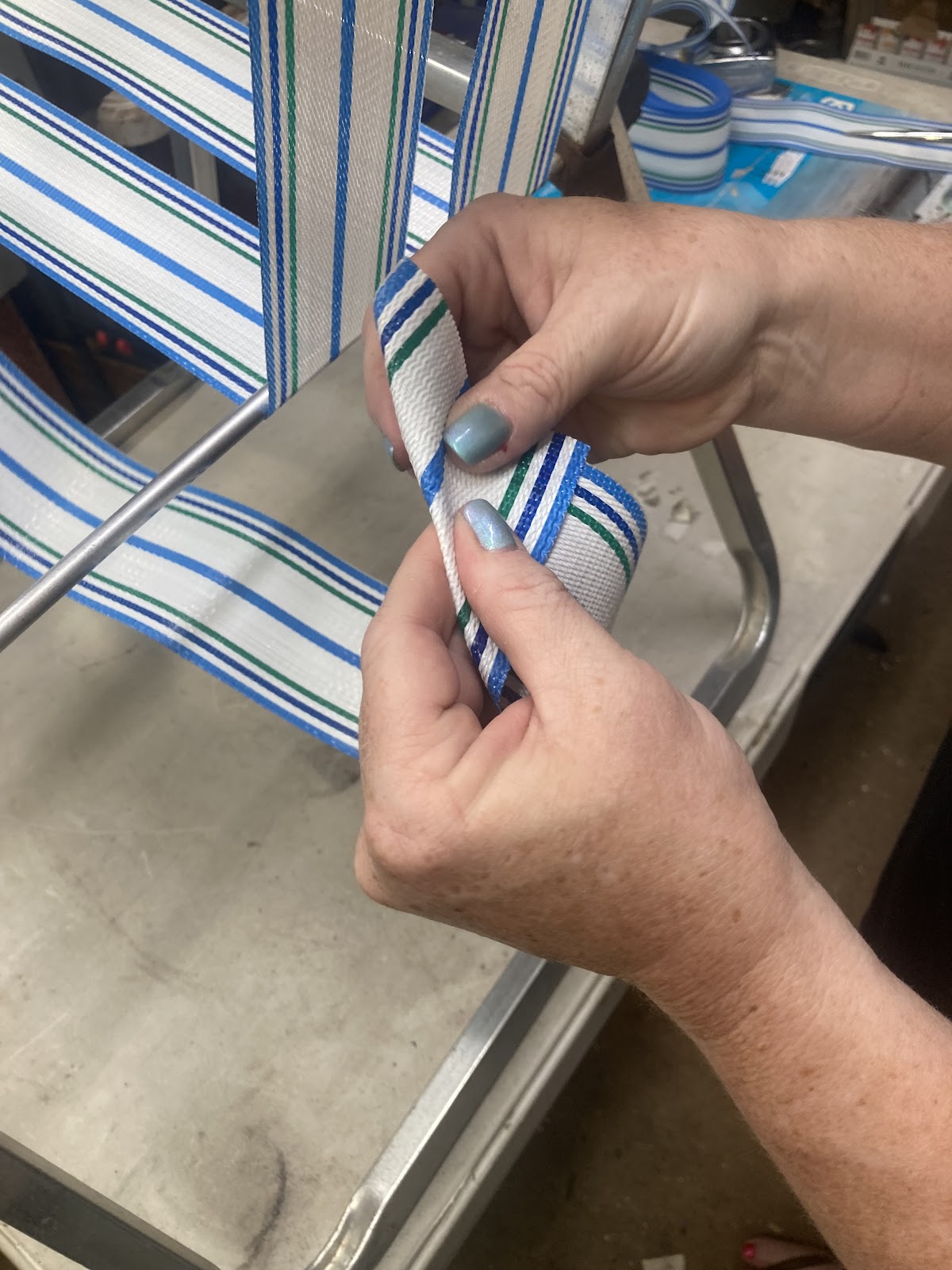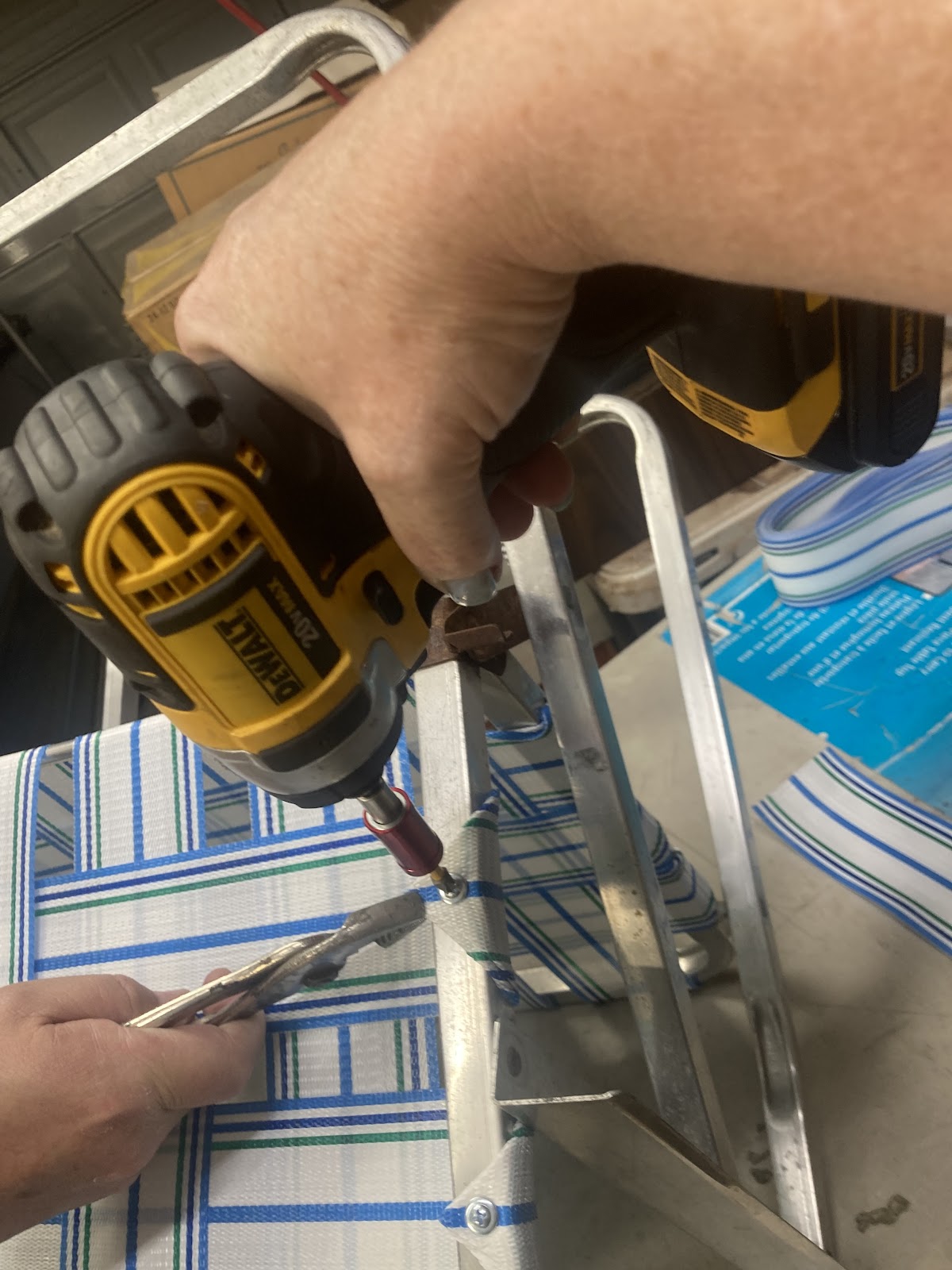These chairs were from my childhood. I love these chairs. They are ever so light, you can lift them with one finger! They are also wonderfully durable and have lasted for decades. Fortunately, chair webbing is still pretty readily available so fixing and repairing is possible. .
https://www.lawnchairusa.com/collections/webbing
I first had to strip off the old webbing and then polish the aluminum. Polishing is a time consuming step, but really adds to the beauty of the final product.
These are nice because they are all metal, no plastic arm rests.
We then got to the business of webbing. Measure the distance you need to cover from hole to hole. You then add a few inches on each end for the fold.

















